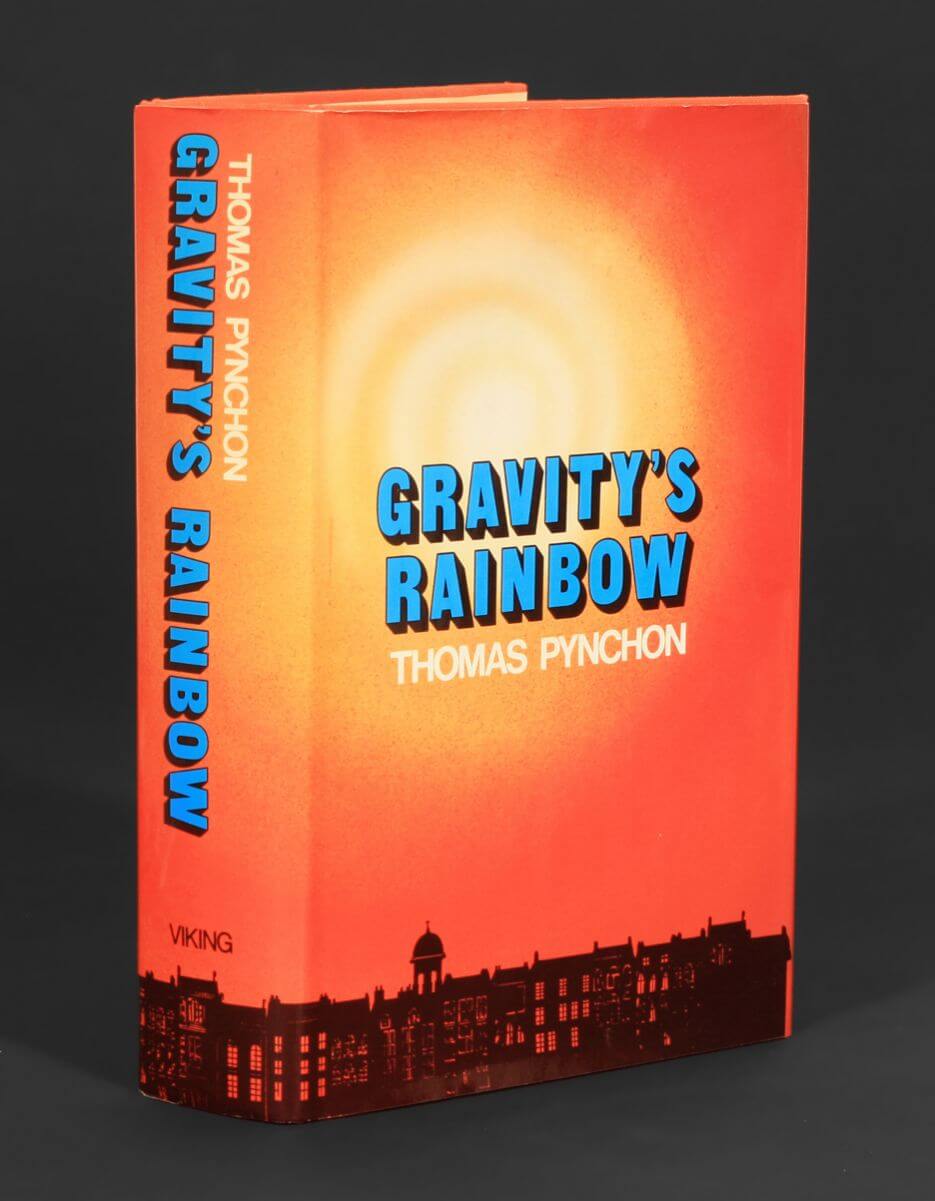When Upper School English Teacher Chip Lee recommends a book, students usually take the dare. It was Lee who inspired a student to memorize one of the most important (and longest) poems of the 20th century, T.S. Eliot’s 434-line poem, The Waste Land.
This year, a student launched a reading group to tackle Lee’s recommendation of one of the longest, most difficult, and most ambitious novels in years, the 900-page Gravity’s Rainbow by Thomas Pynchon.
“Darkness invades the dreams of the glassblower. Of all the unpleasantries his dreams grab in out of the night air, an extinguished light is the worst. Light in his dreams, was always hope: the basic moral hope. As the contacts break helically away, hope turns to darkness, and the glassblower wakes sharply tonight crying, Who? Who?”
—Excerpt from “Gravity’s Rainbow”
Club instigator Tatiana Goderstad says, “During class one day, Mr. Lee threw out Gravity’s Rainbow as a book people should read, so without knowing anything about it, I thought I should do that. I asked him about it, and he had me read Pynchon’s The Crying of Lot 49 first, because it’s kind of a warm-up to Pynchon’s insanely convoluted writing style. Then, I thought I’d read Gravity’s Rainbow…”
Goderstad invited Upper School students and teachers to join the group. “I sent out a mass email and saw who replied, and now, we have a core group of about five students and four teachers who are dedicated to it. Everyone is collectively trying to understand it, so we’re on equal footing.” Teachers include Upper School English teachers Chip Lee, Anne Strobridge, Digital Video instructor Gwylym Cano and CA Librarian Jen Reading.
What makes it a challenging book? One Buzzfeed media columnist says, “Quantum mechanics, mass extinction, speculative metaphysics— this is heavy stuff. It doesn’t help that Pynchon’s style is free-flowing and flashback- heavy.”
Goderstad says she couldn’t attempt the tome without her teachers. “CA has incredible teachers. I couldn’t read this book without Mr. Cano, Ms. Reading, Ms. Strobridge, or Mr. Lee. It’s great that all of them are as excited as the students in the group are, because that way we can support each other.”
Goderstad continues, “All of my teachers are willing to engage their students, which makes it nearly unavoidable not to grow my interest in literature. Also, the books taught in courses here are great. I wouldn’t have read The Brothers Karamazov without Advanced Placement European History last year or heard about Mrs. Dalloway without [the course in] Modernism.
“I also liked reading Crime and Punishment; Dostoevsky isn’t afraid to go really, really big with his writing,” she says. “I like when authors take those risks to say what they hold important. I really, really love Virginia Woolf, because all her writing is simply beautiful,” says Goderstad.
And what will she read next? “Mr. [Stuart] Mills and I plan to read East of Eden over break, with some guidance from teacher [Emily] Perez because she used to teach that novel.”
Lee has often marveled at CA students’ willingness to immerse themselves in a slow and “flat-out hard” read, and he insists the impetus is not his. “All of the previous literary ‘support groups’ (with readings such as Tolstoy’s War and Peace or James Joyce’s Finnegan’s Wake or Ulysses) were motivated and maintained by student interest,” he says.
“The students definitely deserve a nod for so much extra work, and these books are pretty much all work,” says Lee.
